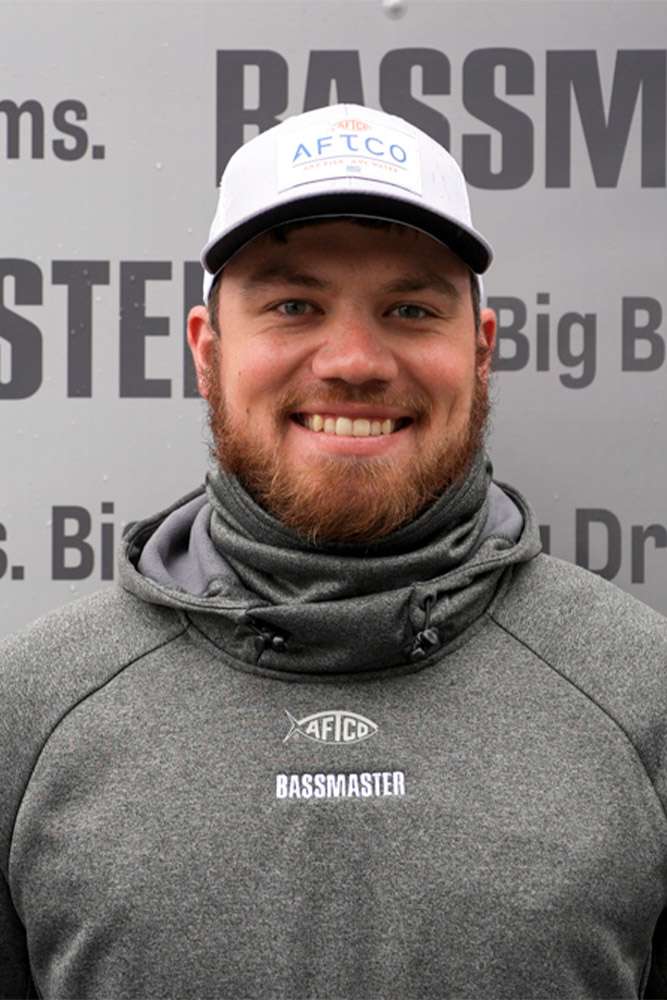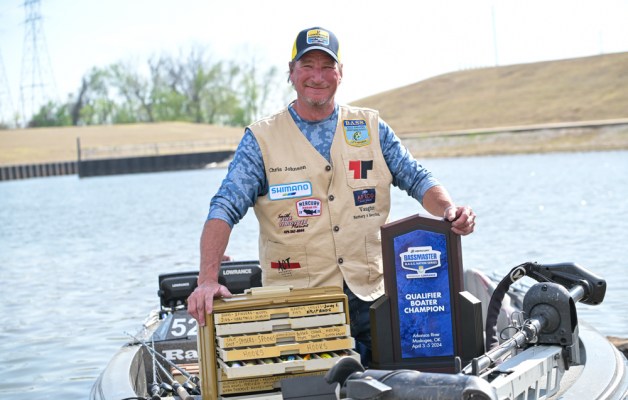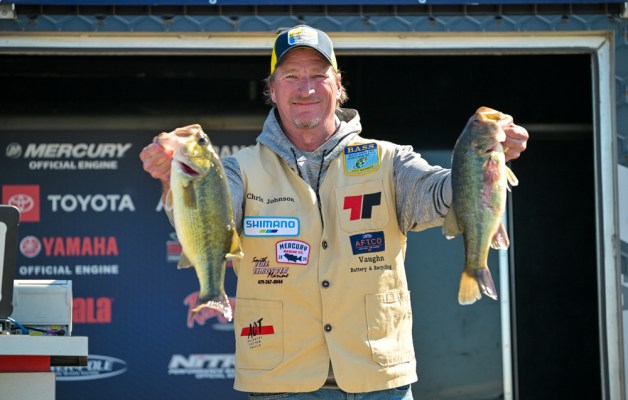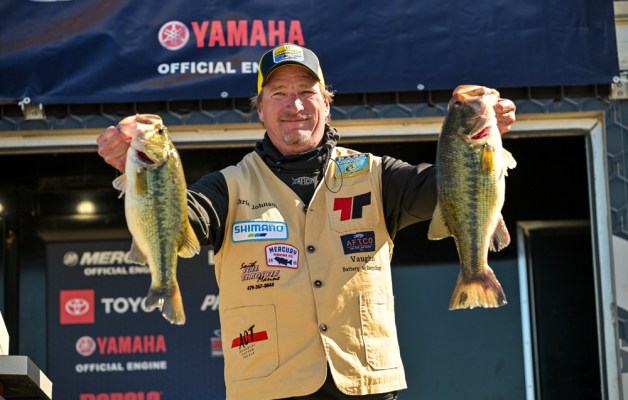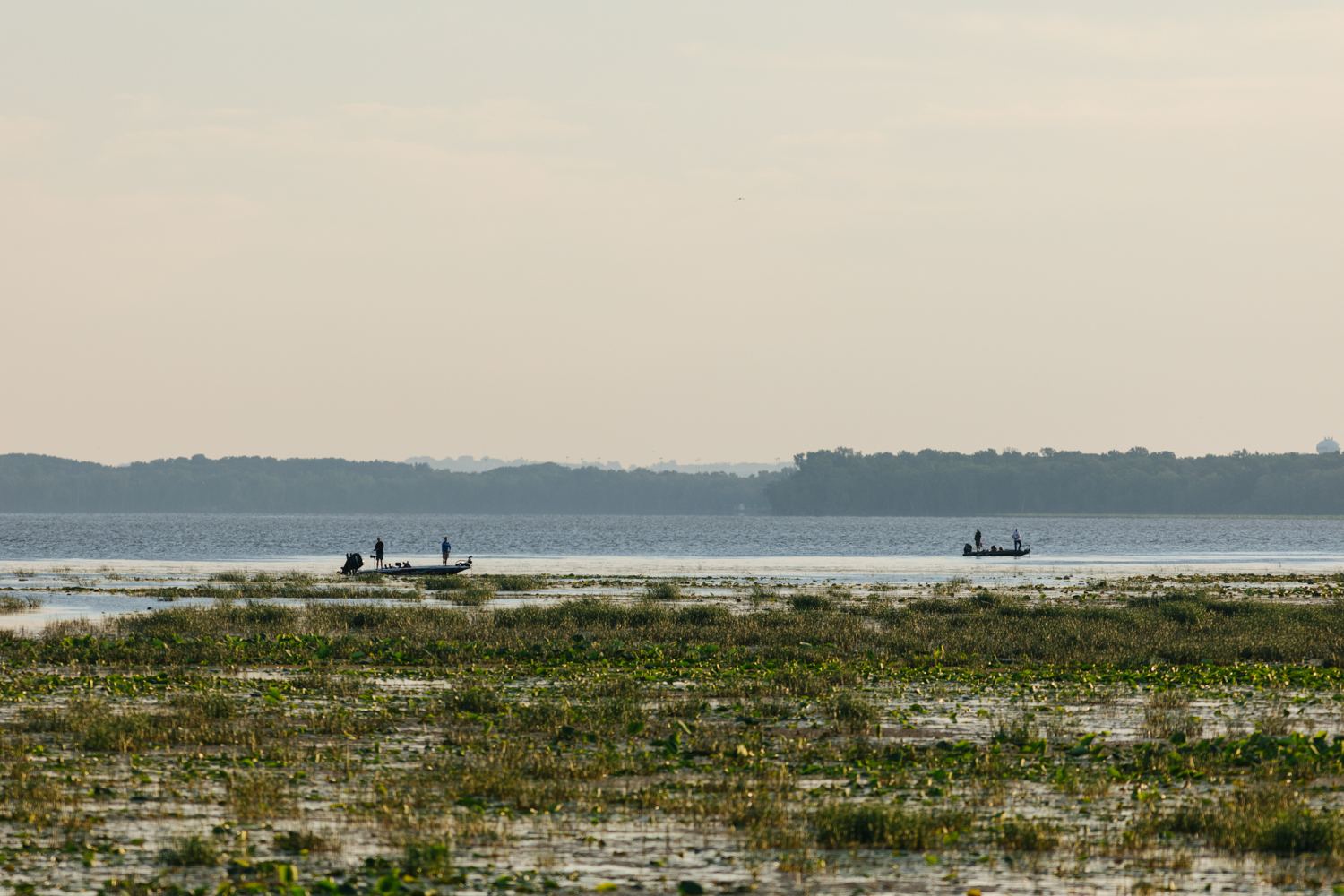
CLINTON, Iowa– With several B.A.S.S. Live Release boats heading to New York for the Open on Oneida Lake, members of the Iowa DNR and Exelon Nuclear aquatic biologist Jeremiah Haas have stepped up to provide fish care and live release trucks for the TNT Fireworks B.A.S.S. Nation Northern Regional at the Mississippi River in Clinton.
“This is something we don’t normally do and something we can’t do for every tournament,” biologist Scott Gritters said. “But this is the biggest one we’ve had in Iowa in a long time. Basically our goal is to get the fish out as fast as possible. We have several trucks and we are spreading them out.”
Haas has two 250 gallon tanks he uses to assist with his duties at the Exelon fish hatchery. This week, they have carried the bass the Nation anglers have caught.
“We want to take care of the resource as best as possible,” Haas said. “We want to make everything seamless between B.A.S.S., the general public and the permitting agency. Ultimately you want to make sure everyone has a good experience and keep those relationships strong. It is a big deal to bring (B.A.S.S.) into these communities for sure. It is nice to be able to showcase the fishery.”
After the bass hit the scales, the DNR’s team of biologists as well as some of the young staff and interns place the bass in one of the live release trucks.The water in the trucks is kept slightly below the water temperature of the river so as to not shock the bass when they enter the tank. Each truck also carries oxygenated water.
For Haas’s tanks, he uses the same process he would for transporting fish on long journeys.
“Before we come here I will put salt in there and we use Vidalife as an enhancer. We do the same thing we would do if we were hauling fish from here to Arkansas,” he said. “We also use fine mist stones. It’s all about water quality. The bass (from Day 1) were very lively and got me all wet before I had to go home.”
Once a truck has reached a certain weight threshold, it leaves the weigh-in site at Clinton Marina and releases the bass somewhere on Pools 13, 14 and 15.
Each truck releases bass in the different pools so each pool has bass returning to it. The smaller tanks travel the furthest and the larger tanks stay closer to the takeoff location. Gritters said the majority of the bass were back in the water before weigh-in ended.
“We’ve been asking the anglers how much they have fished the other pull and if they locked through to other pools,” Gritters said. “Our number one goal is to keep these fish healthy and alive. We have a heck of a fishery and we want to keep it that way.”
Analyzing the Cut Line
Although Illinois struggled in the overall team standings, four of their boaters made the final day cut on the boater side. Curtis Samo leads the way with 24 pounds, 1 ounce in seventh-place while Josh Hubbard, Pete Saele and Allen Williford also landed in the Top 18.
Meanwhile, Indiana and Wisconsin both had three anglers land in the Top 18. On the non boater side, Indiana will have five anglers competing on the final day with four anglers landing inside the Top 7. Wisconsin also has five non boaters competing on the final day.
The top finishing boater and non boater from each state on Friday will advance to the Nation Championship on Lake Pickwick. So while the top overall spot in each division will be up for grabs, anglers want to finish at the top of their state standings and advance.
A slight weather change is on deck for Championship Friday, with a chance of rain and thunderstorms in the morning with daytime highs only reaching the 80s, as opposed to the 90 degree temperatures anglers have battled thus far.

